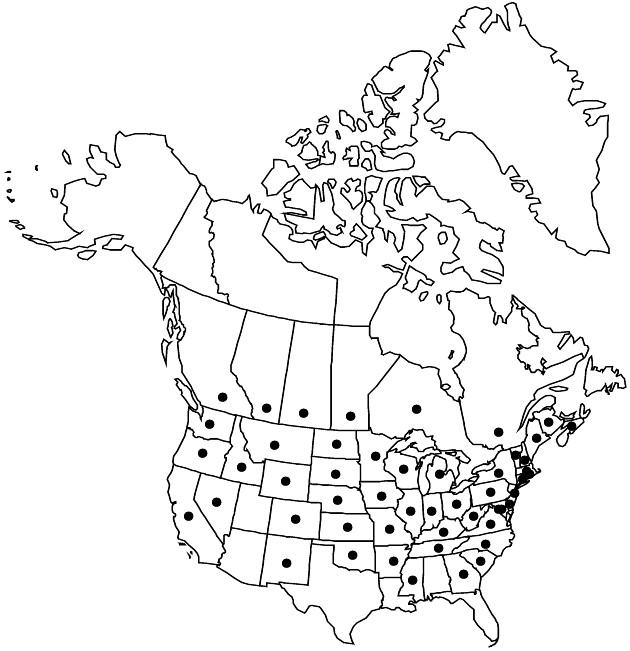Difference between revisions of "Bidens vulgata"
Pittonia 4: 72. 1899.
FNA>Volume Importer |
FNA>Volume Importer |
||
| Line 63: | Line 63: | ||
|publication year=1899 | |publication year=1899 | ||
|special status= | |special status= | ||
| − | |source xml=https://jpend@bitbucket.org/aafc-mbb/fna-data-curation.git/src/ | + | |source xml=https://jpend@bitbucket.org/aafc-mbb/fna-data-curation.git/src/f6b125a955440c0872999024f038d74684f65921/coarse_grained_fna_xml/V19-20-21/V21_516.xml |
|tribe=Asteraceae tribe Heliantheae | |tribe=Asteraceae tribe Heliantheae | ||
|subtribe=Asteraceae (tribe Heliantheae) subtribe Coreopsidinae | |subtribe=Asteraceae (tribe Heliantheae) subtribe Coreopsidinae | ||
Revision as of 18:48, 24 September 2019
Annuals, (15–)30–50(–150) cm. Leaves: petioles 10–50 mm; blades ± deltate to ovate overall, 50–100(–150+) × (15–)30–80(–120+) mm, usually laciniately 1-pinnatisect or 3–5-foliolate, primary lobes or leaflets ± lanceolate, 20–80(–120) × 10–25(–40+) mm, blades rarely 2–3-pinnatisect, bases cuneate, ultimate margins dentate to serrate, little, if at all, ciliate, apices acute to attenuate, faces glabrous or ± hispidulous. Heads borne singly or in 2s or 3s or in open, corymbiform arrays, erect. Peduncles (10–)40–150+ mm. Calyculi of 10–16(–21) ascending to spreading, spatulate to linear, seldom foliaceous bractlets or bracts 10–20(–40) mm, margins usually hispid-ciliate, abaxial faces ± hispidulous. Involucres hemispheric or broader, 5–6 × 8–10 mm. Phyllaries 10–12, ovate to lanceolate, 6–9 mm. Ray florets 0 or 3–5+; laminae pale yellow, 2.5–3.5 mm. Disc florets 40–60(–150+); corollas yellow, 2.5–3.5 mm. Cypselae purplish, brown, olive, or stramineous, ± flattened, obovate to cuneate, outer 6–10 mm, inner 8–12 mm, margins (sometime ± winged) proximally antrorsely, distally retrorsely barbed, apices ± truncate, faces obscurely 1-nerved, sometimes tuberculate, glabrous or sparsely strigillose; pappi of 2 erect to divergent, retrorsely barbed awns 3–4(–7) mm. 2n = 24, 48.
Phenology: Flowering Aug–Sep(–Oct).
Habitat: Ditches, shores of lakes and streams, swamps, marshes, moist woods, roadsides, railroads, fields, waste areas
Elevation: 10–1000 m
Distribution

Alta., B.C., Man., N.B., N.S., Ont., Que., Sask., Ark., Calif., Colo., Conn., Del., D.C., Ga., Idaho, Ill., Ind., Iowa, Kans., Ky., Maine, Md., Mass., Mich., Minn., Miss., Mo., Mont., Nebr., Nev., N.H., N.J., N.Y., N.C., N.Dak., Ohio, Okla., Oreg., Pa., R.I., S.C., S.Dak., Tenn., Vt., Va., Wash., W.Va., Wis., Wyo., introduced in Europe.
Discussion
Bidens vulgata is similar to B. frondosa; it is more robust. Both are phenotypically plastic. Locally, B. vulgata often matures earlier than B. frondosa.
Selected References
None.